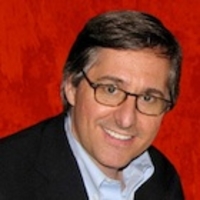Shares opened lower on Wall Street Tuesday on news of Steve Jobs' medical leave. On Monday, shares dipped as much as 10 percent overseas before rebounding. Dan Lyons reports on the company's deep bench ready to fill the void. Plus, Kate Dailey on Steve Jobs' health history and what may be wrong now.
With Apple CEO Steve Jobs back on medical leave—an indefinite one, unlike his last break—the company’s investors, $300 billion worth of them, are forced to envision a post-Jobs Apple. And they didn’t like the thought: Shares fell as much as 10 percent before rebounding in overseas trading Monday.
Gallery: Apple's Chief Lieutenants

The veteran Apple watchers I spoke with, those who know the plans and the players, were far more optimistic, mostly because Jobs has done a fantastic job of attracting top talent across the board, notably Tim Cook, the company’s chief operating officer, a veteran of IBM and Compaq who will run the company while Jobs is on leave. “He is a master of implementation and strategic vision, a guy who knows how to run a large-scale operation, right down to the smallest details,” says Jean-Louis Gassee, a former president of Apple who left the company in 1990 but has remained close with many inside the company. “The last time Steve took a leave of absence (in 2009, for liver transplant surgery), Tim was in charge and the company continued to run without a hitch.”
Tim Bajarin, president of Creative Strategies, a consultancy in Campbell, California, spoke with Cook at last week’s unveiling of the iPhone on Verizon. “I walked away thinking that this guy is much more in charge and driving what is going on at Apple than most people understand,” he recalls. “He was just as on top of all the issues as Jobs would have been.”
Bajarin says Apple has a unique corporate culture that would make it almost impossible for an outsider to succeed as CEO. “They march to their own drumbeat… Apple needs someone who understands what it means to carry out Steve Jobs’ vision,” he says. “There’s only one person on their team who can step into that role, and that’s Tim.”
Cook’s key lieutenants include Phil Schiller, who runs marketing, and Jonathan Ive, who runs design and is considered one of the best industrial designers in the world. Another important executive: Ron Johnson, who left Target to run Apple’s retail organization. “In every area where Steve had a good idea, he also brought in the best minds possible who could adapt to the Apple way of thinking,” says Bajarin. “And then he gave them the reins.”
Jobs has a few great gifts. One is the ability to see into the future and to design products that are aimed at a point a few years out. Another is his perfectionism—this has driven more than a few people around him absolutely crazy—and his willingness to say no. He’s not afraid to hurt feelings. He wants things to be simple. He wants to make products that he himself would use.
But right now, perhaps his most important trait is his charisma, which has inspired thousands of people at Apple to share in his pursuit. His ability to tell his engineers and designers that this version is not good enough, go back and do it again, and while I know you spent months working on these new features and you’re very proud of them, I’m sorry, but we’re tossing them out. We want to do more with less, not less with more
That relentlessness will serve the company well in his absence. Leander Kahney, editor of The Cult of Mac, a popular Apple-centric blog, and author of Inside Steve’s Brain, a look at Jobs’ management techniques, reckons it could be years before the departure of Jobs would begin to be felt.
“They’ve got enough products in the pipeline,” Kahney says. “This summer they’ve got iPhone 5 and the iPad 2. Those are locked in, already made. Undoubtedly they’ve got prototypes for whatever comes next. They’ve got a three to five year plan. There’s iTunes in the cloud, Apple TV, more iPads. So for three to five years they’ll be cranking out stuff that Steve’s already got his fingers deep into.”
On the other hand, Kahney says, “Obviously it wont be the same. It won’t be quite as bright and magical.”
That’s the word I was looking for. That, to me, is what Jobs brought to Apple, and what will be missed if he does not come back—magic.
Dan Lyons is technology editor at Newsweek and the creator of Fake Steve Jobs, the persona behind the notorious tech blog, The Secret Diary of Steve Jobs. Before joining Newsweek, Lyons spent 10 years at Forbes.






